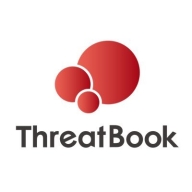

Palo Alto Networks AutoFocus and ThreatBook compete in threat intelligence, each with unique advantages. ThreatBook is known for its feature set and integration, while AutoFocus stands out for pricing and support.
Features: AutoFocus provides advanced threat analysis, deep insights, and detailed incident analysis. It integrates threat intelligence into broader security ecosystems. ThreatBook includes an extensive IP threat intelligence database and high compatibility with security tools, offering a feature-rich environment.
Ease of Deployment and Customer Service: AutoFocus features an intuitive deployment model with effective support channels, simplifying transitions and ongoing management. ThreatBook also supports straightforward deployment and is praised for its proactive customer service, enhancing integration and issue resolution efficiency.
Pricing and ROI: AutoFocus generally offers a lower upfront cost, appealing to budget-conscious organizations, highlighting efficient threat management and reduced security incidents as ROI. ThreatBook may have higher initial costs, but its features offer substantial long-term ROI through enhanced threat visibility and integration.

AutoFocus contextual threat intelligence service accelerates analysis, correlation and prevention workflows. Unique, targeted attacks are automatically prioritized with full context, allowing security teams to respond to critical attacks faster, without additional IT security resources.
ThreatBook is a cybersecurity platform that provides advanced threat intelligence to protect networks from evolving threats, utilizing real-time data analytics and comprehensive reporting to bolster defenses.
Designed for enterprises, ThreatBook equips IT teams with insights into the latest threats, integrating seamlessly with existing security infrastructures. It focuses on proactive threat detection and incident response, offering a deep understanding of threat landscapes. The platform is appreciated for its ability to deliver actionable intelligence, enhancing overall network security posture.
What are the key features of ThreatBook?In finance, ThreatBook implementation helps safeguard sensitive financial data, while in healthcare it protects patient information by preventing data breaches. It also supports manufacturing businesses by securing intellectual property from cyber espionage. Each industry benefits from features tailored to its specific threat landscape and priorities.
We monitor all Threat Intelligence Platforms reviews to prevent fraudulent reviews and keep review quality high. We do not post reviews by company employees or direct competitors. We validate each review for authenticity via cross-reference with LinkedIn, and personal follow-up with the reviewer when necessary.